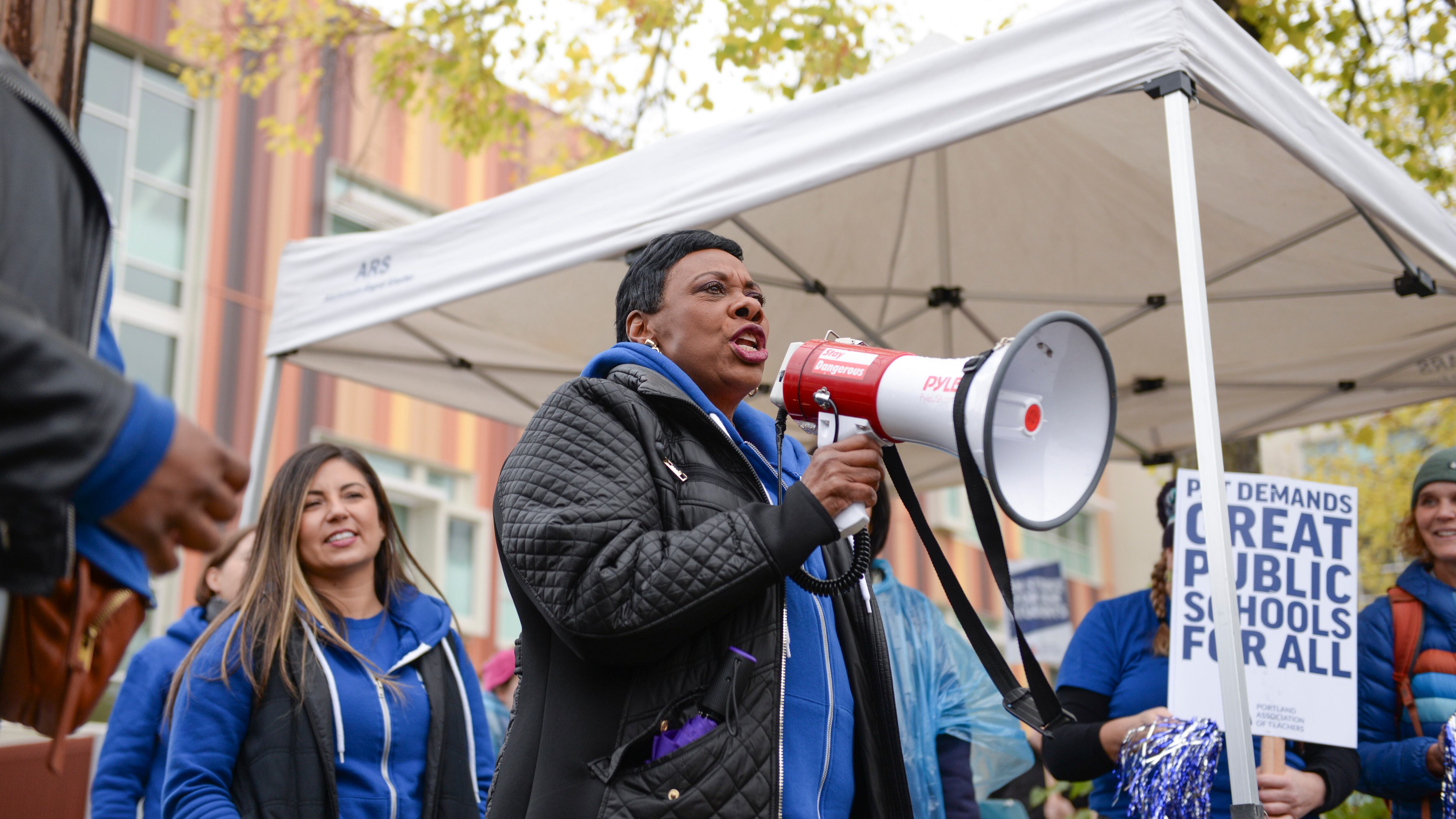Portland Public Schools leaders started pointing their fingers toward Salem as a way to settle the teachers’ strike that shuttered the district’s 81 schools this morning.
“We need real investment from the state,” said Superintendent Guadalupe Guerrero at a press conference at school district headquarters. “The state of Oregon is not funding what they themselves have identified as a quality education for Oregon students.”
Portland School Board Chair Gary Hollands was even more direct. “The excuse of, ‘We don’t have more money,’ is unacceptable,” Hollands said. “When we make things a priority, we find the money.”
Since 2020, PPS’s revenue has increased by 9%, but that’s against 18% inflation, Guerrero said. The funding has not kept pace with the needs of students nor of educators, he said, adding that PPS enrollment is down by about 4,000 students.
The demand by Guerrero and Hollands for more state funding was significant—just hours into the strike, the school district was in essence joining forces with its teachers to pressure state lawmakers and Gov. Tina Kotek.
That dynamic starts to explain why Kotek, a longtime ally of organized labor, was urging teachers to stay at the bargaining table Oct. 30: The demand for higher wages ultimately lands on her desk.
In response to questions from KOIN-TV on Monday, Gov. Tina Kotek said she was in contact with both PPS and the Portland Association of Teachers as they bargained. “I respect the collective bargaining situation they are in at Portland Public Schools and I expect the adults in the room to come together and figure it out for kids and families,” Kotek said.
She also said, essentially, hands off the kicker money.
“I think a lot of Oregonians are hurting,” Kotek said. “Inflation has really impacted people. We are seeing numbers that people are dipping into their savings more and that personal income tax relief that will come in next year’s taxes is really important to Oregonians.”
Thousands of teachers walked picket lines in front of their schools on the first day of PAT’s strike today, increasing visibility of their cause. Sending the district’s 49,000 students home—with no widespread plan for learning or child care and no end in sight—is weighing heavily on Guerrero, he said.
“I couldn’t sleep last night,” he said. “I want to make sure that they are safe, supervised and cared for today and that they have the means of receiving some nutrition.”
The school district will provide meals for students on Tuesdays, Wednesdays and Thursdays during the strike.
The union’s current proposal would require $370 million of new spending, Guerrero said, and therefore deep cuts. Those cuts could mean fewer employees, higher class sizes, and reduced services to students—thus defeating the union’s stated purpose of a strike benefiting the children of Portland.
“We’re eager to work with our educators to find a solution within our fixed revenue and our operational limitations, but we are unable to meet their core demands,” Guerrero said. “That remains the case, strike or no strike.”

